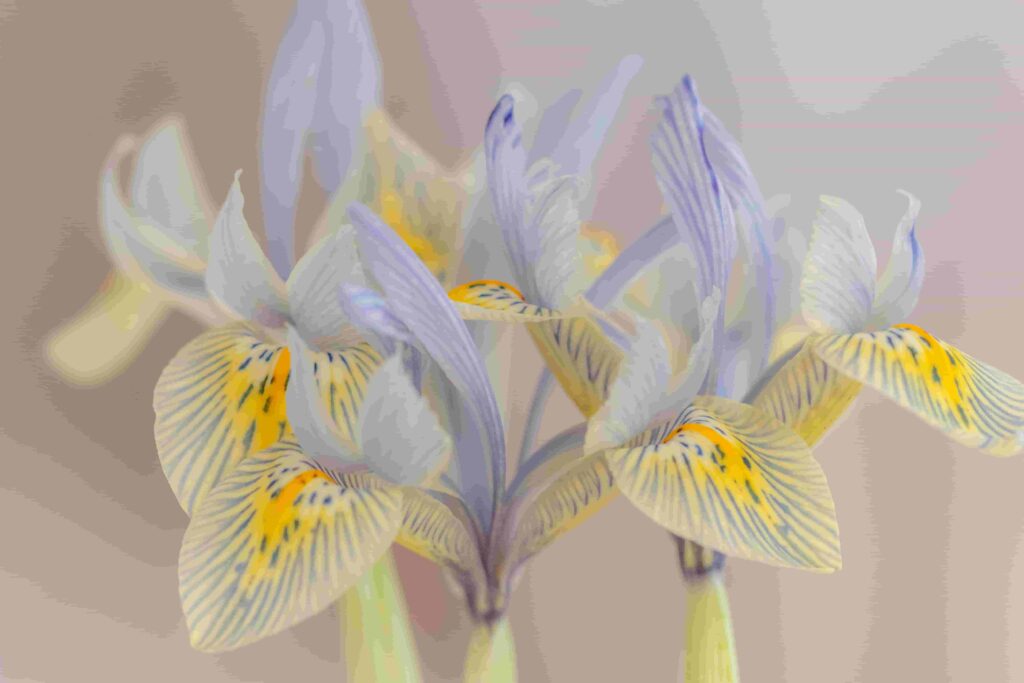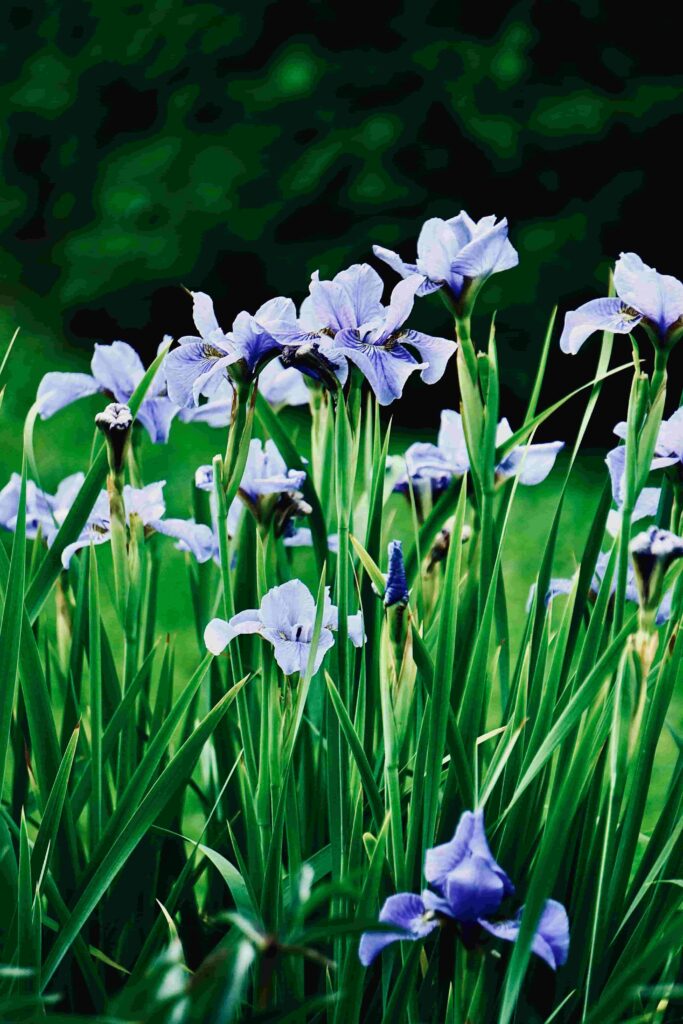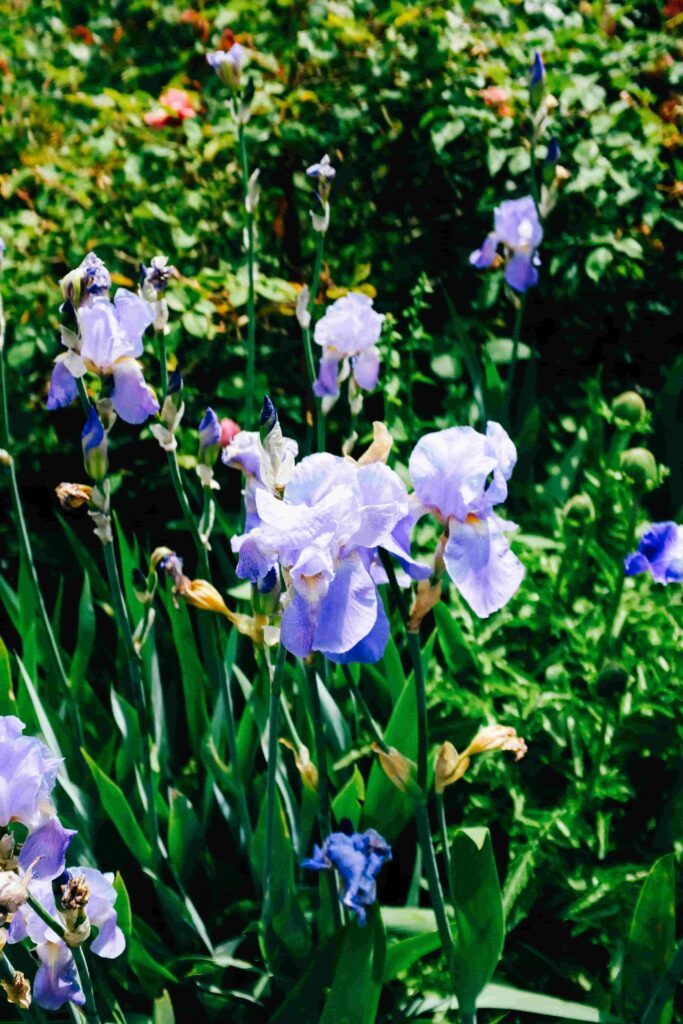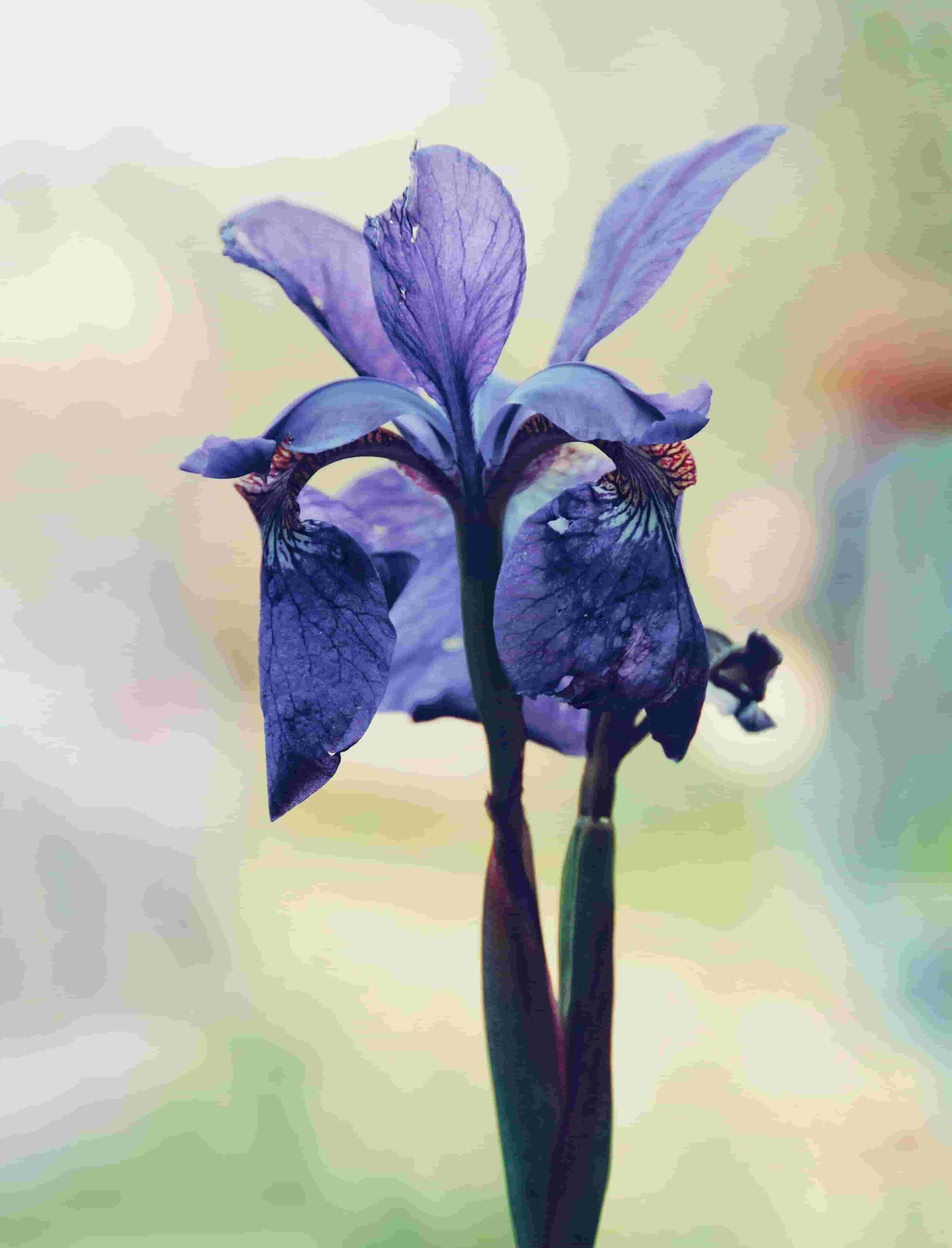Irises are captivating flowers that are admired for their vibrant colors and graceful form. With their delicate petals and striking blooms, These plants have become a popular choice for garden enthusiasts and florists alike. We shall delve into the intriguing world of irises in this post, as well as their different varieties, growing advice, and symbolic meanings.
विषयसूची
1. Introduction: The Beauty of Irises

Irises, with their mesmerizing beauty, have captivated people for centuries. These perennial flowers belong to the Iridaceae family and are known for their distinctive blooms and slender, sword-like leaves. The iris flower is composed of six petals, with three upright petals called “standards” and three drooping petals known as “falls.” Their exquisite color combinations and intricate patterns make them a popular choice for both home gardens and floral arrangements.
2. The History and Symbolism
Throughout history, irises have held significant symbolism in various cultures. The ancient Greeks associated irises with their goddess Iris, who personified the rainbow and served as a messenger between gods and humans. In Greek mythology, irises were believed to convey messages of wisdom and hope. In addition, the fleur-de-lis, a stylized iris, became a symbol of French royalty.
3. Types of Irises
Iris plants come in a vast range of varieties, each with its own special traits and evolving needs. Here are four popular types of iris varieties:
3.1 Bearded Iris
Bearded iris plants are the most common type and are characterized by a fuzzy “beard” on their falls. They bloom in a vast range of colors, including purple, blue, white, yellow, and pink. These iris varieties are known for their tall stems and showy flowers, making them a popular choice for garden borders and cut flower arrangements.
3.2 Siberian Iris
Siberian iris plants are known for their slender, grass-like leaves and delicate flowers. They offer a touch of elegance to any garden and often bloom in hues of blue, purple, and white. These iris varieties are a favorite among gardeners because they are resilient and do well in a variety of soil types.
3.3 Japanese Iris
Japanese iris plants are prized for their large, ruffled blooms and vibrant colors. They often feature eye-catching patterns and are commonly found in shades of purple, white, and pink. These iris varieties prefer moist soil and are ideal for planting near water features like ponds or streams.
3.4 Louisiana Iris
Louisiana iris plants are native to the wetlands of the southeastern United States. They are characterized by their broad, arching leaves and vibrant flowers that bloom in shades of blue, purple, white, and yellow. These iris varieties thrive in moist or boggy soil, making them a perfect choice for water gardens or rain gardens.
4. Growing Irises: A Guide to Successful Cultivation

To grow healthy and vibrant iris plants, it’s essential to provide them with the right growing conditions. Follow these steps for successful cultivation:
4.1 Choosing the Right Location
Iris plants thrive in full sunlight, so choose a location that receives at least six hours of direct sunlight per day. Make sure the soil has good drainage to avoid waterlogging, which can cause root rot.
4.2 Soil Preparation
Get the soil ready by eliminating weeds, stones, and any debris. Iris plants appreciate soil with a pH range of 6.0 to 7.5, which is slightly acidic to neutral. To enhance fertility and improve drainage, incorporate organic materials such as compost or well-aged manure into the soil.
4.3 Planting Irises
Plant irises in late summer or early fall, as this allows them to establish a strong root system before winter. Dig a hole large enough to accommodate the rhizome (bulb-like structure) of the iris, ensuring the top of the rhizome is level with the soil surface. Space the plants 12 to 24 inches apart to allow for proper airflow and prevent overcrowding.
4.4 Watering and Fertilizing
Water iris plants regularly, especially during dry spells, to keep the soil consistently moist but not waterlogged. Before new growth starts to show in the early spring, apply a balanced, slow-release fertilizer. Avoid excessive nitrogen fertilizers, as they can lead to weak stems and decreased bloom production.
4.5 Pest and Disease Control
Monitor your iris plants for common pests such as aphids, iris borers, and thrips. Regularly inspect the plants and take appropriate measures, such as handpicking pests or using organic insecticides, if necessary. To prevent fungal diseases, provide adequate air circulation and avoid overhead watering.
4.6 Dividing and Transplanting Irises
Every three to five years, divide overcrowded iris clumps to maintain their vigor and promote better blooming. Dig up the clumps after the foliage has turned yellow, carefully separate the rhizomes, and replant them in freshly prepared soil. This process helps prevent congestion and encourages the development of new blooms.
5. Caring for Irises: Maintenance and Tips
Once your iris plants are established, proper maintenance is crucial for their long-term health and beauty. Here are some essential tips for caring for irises:
5.1 Mulching
Spread organic mulch around the plants’ base to retain moisture, inhibit weed growth, and stabilize soil temperatures. Mulching also adds nutrients to the soil as it breaks down.
5.2 Pruning and Deadheading
After irises have finished blooming, remove the spent flowers by cutting the stems down to the base. This process, known as deadheading, encourages the plant to redirect energy into root and rhizome development rather than seed production. In late fall or early spring, trim back the foliage to about six inches from the ground to promote new growth.
5.3 Winter Protection
In colder regions, protect iris plants from freezing temperatures by applying a layer of mulch or straw around the base of the plants. This helps insulate the rhizomes and prevents frost damage. Take off the winter protection in early spring once the threat of frost has subsided.
6. Using Irises in Floral Arrangements

Irises are not only beautiful in the garden but also make stunning additions to floral arrangements. Here are some tips for using irises in floral design:
6.1 Color Combinations
Try out several color schemes to create aesthetically appealing compositions. Pair purple or blue irises with complementary colors such as yellow, orange, or white for a vibrant contrast. For a more serene and elegant look, combine white or pale blue irises with soft pastel flowers like roses or lilies.
6.2 Iris Bouquets and Centerpieces
Create eye-catching bouquets and centerpieces by grouping irises together with other complementary flowers. Arrange them in a vase or use floral foam to create a structured display. The tall stems and bold colors of irises make them ideal focal points in arrangements.
6.3 Iris Symbolism in Flower Arranging
Take advantage of the symbolic meanings associated with irises in your floral designs. Incorporate them into bouquets that convey messages of wisdom, hope, or admiration. Consider using irises in arrangements for special occasions such as birthdays, anniversaries, or graduations.
7. Iris Festivals and Gardens Around the World
If you’re a fan of irises, you might want to explore some of the stunning iris festivals and gardens around the world. Here are a few notable ones:
7.1 Keukenhof Gardens, Netherlands
Known as the “Garden of Europe,” Keukenhof Gardens in the Netherlands boasts a vast collection of flowers, including an impressive display of irises. Visitors can stroll through beautifully landscaped gardens and enjoy the vibrant colors and fragrances of countless blooms.
7.2 Iris Festival in Florence, Italy
Florence, Italy, hosts an annual Iris Festival to celebrate the arrival of spring. The festival features parades, concerts, and exhibitions centered around irises. Visitors can marvel at the stunning displays of different iris varieties and immerse themselves in the city’s rich cultural heritage.
7.3 International Iris Garden, Oregon, USA
Located in Schreiner’s Iris Gardens in Oregon, the International Iris Garden showcases a diverse collection of irises from around the world. Visitors can wander through the garden’s extensive beds and enjoy the breathtaking display of colors and forms.
7.4 Iris Garden at Giverny, France
The renowned Giverny Gardens in France, famously associated with Claude Monet, feature an enchanting iris garden. Visitors can experience the beauty that inspired the Impressionist master and explore the serene landscapes that influenced his art.
8. Conclusion
Irises are undoubtedly captivating flowers that bring elegance and beauty to gardens and floral arrangements. With their rich history, diverse types, and symbolism, these plants continue to enchant people worldwide. By following proper cultivation and care techniques, you can enjoy the stunning blooms and vibrant colors of iris flowers in your own garden. Whether you appreciate them for their aesthetics or their deeper meanings, irises are sure to bring joy and inspiration.
पूछे जाने वाले प्रश्न
What is the meaning behind the iris flower?
The iris flower symbolizes wisdom, hope, and admiration. Its name is derived from the Greek goddess Iris, who served as a messenger between gods and humans.
How often should I water my irises?
Water your irises regularly, aiming for about an inch of water per week. Adjust the frequency based on rainfall and temperature conditions.
Can irises grow in containers?
Yes, irises can be grown in containers. Make sure the container possesses proper drainage and employ a potting mix that drains well. Choose dwarf or smaller iris varieties for containers.
When is the best time to divide irises?
The best time to divide irises is after they have finished blooming, usually in late summer or early fall. This allows the plants to establish new roots before winter.
Do irises attract pollinators?
Yes, irises attract pollinators such as bees and butterflies with their nectar-rich flowers. Their vibrant colors and fragrance make them a magnet for these beneficial insects.

